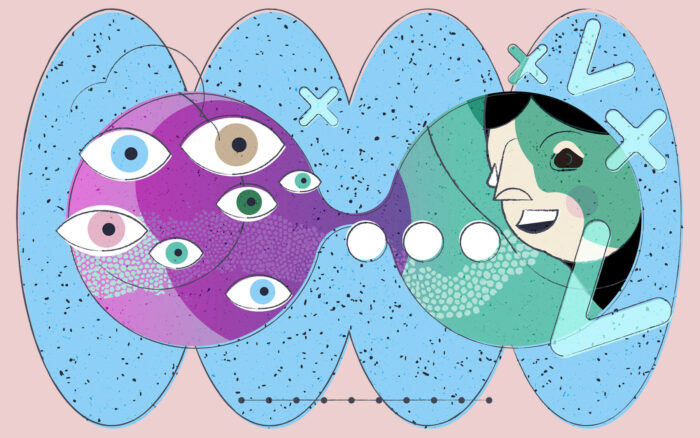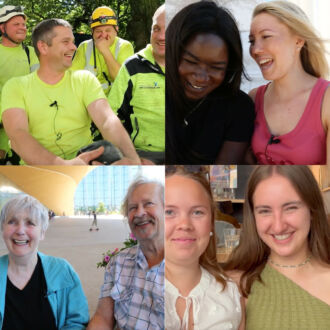Every Tuesday evening, I sit before my computer and press “Go Live” on YouTube, armed with a questionable understanding of Finnish grammar and an even more questionable ability to pronounce words with more double vowels than should be legal.
What began as an innocent attempt to practise quickly became something far more potent: a community, a habit and a long-running experiment in the peculiar ways that language works its way into the brain.
Livestreaming, as it turns out, has become an unexpected but effective way to do just that. It forces consistency, invites real-time feedback and ensures that any mistake – no matter how absurd – is instantly witnessed, dissected and, quite possibly, turned into a meme.
But beyond the spectacle, it has taught me some lessons about acquiring a new language. Here are the three most important takeaways.
1. Speak first, panic later
The greatest tragedy of language learning is that we are often too afraid to use the words we have painstakingly acquired. We hoard them like dragons guarding treasure. However, while dragons hoard out of greed, we do so out of embarrassment, too afraid to spend our words lest it be the wrong currency. But here’s the secret: the only way to speak a language is to, well, speak it.
During my streams, I’d set a timer for 15 minutes and solemnly vow to verbalise my thoughts in Finnish before granting myself the mercy of a translation check. Sometimes I was close. Other times, I inadvertently declared war on the very concept of grammar. Once, I confidently translated the name of my home country, the United States (Yhdysvallat), into English as “Switzerland.”
In my defense, I was used to seeing it only as Amerikka or USA (Finnish speakers often use this English abbreviation). In the heat of the moment, my brain panicked and saw a similarity between Yhdysvallat and Itävalta (which is actually Austria, so I was doubly wrong). The viewers in the chat enjoyed that hiccup immensely and have never let me live it down – nor should they.
Because here’s the thing: Nobody expects you to speak Finnish perfectly (least of all Finns themselves). The moment I realised this, my mistakes stopped feeling humiliating and started feeling hilarious. Mistakes aren’t failures; they’re proof that you’re trying. And if you’re lucky, they might even make for excellent comedy.
If you don’t have a livestream audience to hold you accountable, narrate your day in Finnish, record voice notes or talk to your pet. They won’t correct you, but they also won’t judge you (probably).
2. Languages are best learned in company

The audience is watching: Language learning is also a cultural back-and-forth.Illustration: Jarkko Ojanen
Languages are not equations to be solved, but living, breathing things. And the moment you involve other people, the process becomes livelier, funnier, and infinitely more memorable.
One of the greatest benefits of livestreaming my Finnish practice on YouTube has been the interaction with viewers. They correct my mistakes, challenge me with new words, and occasionally take great delight in my linguistic misadventures. But language learning is also a cultural exchange, and on my stream that’s a two-way street. Just as they steer me through the choppy waters of Finnish like patient raft guides coaching someone who thought the trip would be more “lazy river,” I return the favor with cultural tidbits of my own.
One of my proudest contributions? Convincing (or at least attempting to convince) my Finnish viewers that the best brand of dark Finnish rye bread is undeniably Reissumies, and that it is best enjoyed toasted and topped with peanut butter and blueberry jam.
Some people in the chat were sceptical of the non-Finnish toppings. Others were horrified. But as with all great debates, the conversation itself was half the fun. Learning a language isn’t just about mastering grammar. It’s about the connections we make, the ideas we trade and the laughter that comes from discovering each other’s quirks.
If livestreaming isn’t an option, there are plenty of other ways to make language learning social. Join online forums, attend language meetups or comment on Finnish social media posts. The kindness of strangers (and their occasional amusement) is an underrated learning tool.
3. The trick is not motivation – it’s routine
Motivation is unreliable. It arrives in grand, heroic bursts and disappears the moment things become inconvenient. Routine, however, trudges forward regardless of enthusiasm.
My Tuesday streams became sacred not because I always felt like doing them, but because they were simply what I did on Tuesdays. There were plenty of evenings when I’d drag my feet beforehand, but once I got going, I started having fun. The chat picked up, the commentary flowed, and suddenly it felt silly that I had resisted in the first place.
If you struggle to stay on track, tether your study sessions to something immovable: read Selkouutiset (the news in Easy Finnish) with your morning coffee, listen to a Finnish podcast while commuting or write a diary entry before bed. Language is learned in the small, steady moments – not in grand fits of inspiration.
A few final thoughts

Mistakes aren’t failures; they’re proof that you’re trying. Illustration: Jarkko Ojanen
Despite the mistakes, the awkwardness and the occasional linguistic disaster, through livestreaming I’ve come to realise that Finnish isn’t something I can master by sheer force of logic alone. Too often, I have approached it like a sudoku puzzle, analysing case endings as if they were numbers that must add up just right. But language is not a grid to be solved – it is something lived, spoken and sometimes completely fumbled.
Because Finnish, you see, is not so much learned as it is summoned. It is a language where syllables shift like moonlit waters and endings twist with a logic that sometimes gives even native speakers pause for thought.
What other language could the wise old bard Väinämöinen have used to sing his rival into a swamp, dispel an evil magic plague and coax forgotten wisdom from the belly of a giant, as he does in the Finnish national epic Kalevala? A language of poetry and power, and here I am, trying not to panic when the cashier asks, “Haluatko muuta?” (Would you like anything else?).
So we study. We listen. We speak, however clumsily, trusting that fluency is not built in grand moments of inspiration but in the small, daily rituals of trying, failing and trying again. We embrace the rhythm, the absurdity, the sheer magic of it all – until, one day, we cast a sentence that does not fizzle in midair.
Onnea matkaan! (Good luck on your journey!)
By Tyler Walton, April 2025











